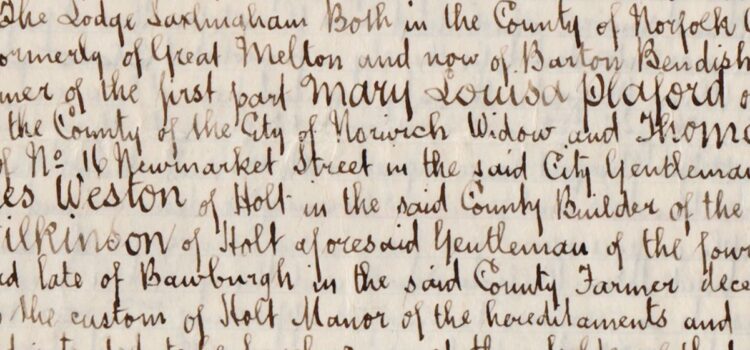

This article is an excerpt from the Shortform summary of "The Federalist Papers" by Alexander Hamilton. Shortform has the world's best summaries of books you should be reading.
Like this article? Sign up for a free trial here .
What were the Anti-Federalist Papers? How did the Anti-Federalist Papers compare to The Federalist Papers and the new Constitution?
The Anti-Federalist Papers were written in opposition to ratification of the new Constitution. They supported a more confederate form of government than the strengthened central power the United States would be with ratification.
Read more about the problematic positions of the Anti-Federalist Papers.
The Anti-Federalist Papers Wanted a Confederacy
A confederacy is an association of independent states or political communities. They are an inherently unstable and weak form of government. Under a confederacy, the overarching state tends to lack the proper authority to perform important central functions like raising an army, administering justice, collecting revenue, or regulating coinage, because its constituent members are too powerful and can block any initiative. The Anti-Federalist papers were supportive of a weaker central government.
The weak central government is only held together because the constituent states are also too weak to exist on their own as independent nations. This leaves the entire confederacy vulnerable to civil war and outside invasion.
This is precisely what plagued 18th-century confederacies like the Holy Roman Empire (consisting of large parts of what is now Germany). A ramshackle polity made up of competing and disunited principalities, duchies, and baronies, the Holy Roman Empire was a scene of constant warfare and strife, largely because of its flawed constitutional design.
The Anti-Federalist Papers opposed a strong federal government. Opponents often made the argument that it would trample upon the rights of state and local governments. But Publius made the opposite case—that the states were more likely to infringe upon the federal government, not the other way around. This was because the people would naturally feel more closely connected and loyal to their state governments, owing to their physical proximity and shared history and experiences—just as an individual is more connected to her family than she is to her community at large. In any conflict between a state and the federal government, the state was likely to have the majority on its side.
Historically, the only way that confederacies have overcome this tendency to split apart is when local governments become so oppressive to the people that the latter unite with the higher central authority to overthrow them.
During the Age of Feudalism in Europe’s Middle Ages, the local aristocracy was frequently more powerful than the monarch and, therefore, had greater ability to exploit the peasantry. Successful monarchs were only able to break the backs of the nobility by tapping into this rich source of discontent and allying with the peasants.
The Necessary and Proper and Supremacy Clauses
In enumerating the purposes of the federal government under the new Constitution, Publius also took care to make explicit the powers necessary to achieve them.
The Necessary and Proper Clause of the Constitution states that Congress has the power to enact all “necessary and proper” laws to enforce the powers it is granted. Opponents of the Constitution believed that this clause gave tyrannical power to Congress, but it did nothing of the kind. Rather, the very idea of establishing a government made the Necessary and Proper Clause self-evident.
The Anti-Federalist Papers and other opponents of the new government were also agitated over the Supremacy Clause, that part of the Constitution which made federal law the supreme law of the land—superseding state law (and requiring even state officials to swear an oath of allegiance to the Constitution). But again, such a clause simply goes hand-in-hand with the task of setting up a federal system.
The Necessity of the New Constitution
As we’ve seen, the proposed Constitution was a controversial issue at the time of The Federalist Papers. Opponents, like the Anti-Federalist Papers, raised various objections against it, although many of these individual objections contradicted each other.
- Some claimed that it gave too much power to the smaller states through their equal representation in the Senate.
- Others claimed that the proportionate representation by population in the House of Representatives gave too much influence to the larger states.
- Critics in the manufacturing states objected to the power of direct taxation (because they feared it would fall heavily on their goods), while agricultural states opposed the federal government’s power to tax imports (because they feared it would make the foreign manufactured goods upon which they relied too expensive).
- Those in the more agricultural states, meanwhile, objected to the federal power to tax imports.
But the weakness of the Anti-Federalist Papers’ position was that it did not coalesce around an alternative. If they objected to the new Constitution, what did they propose instead? The Articles of Confederation had proven to be an abject failure. Retaining them was a non-starter.

———End of Preview———
Like what you just read? Read the rest of the world's best summary of Alexander Hamilton's "The Federalist Papers" at Shortform .
Here's what you'll find in our full The Federalist Papers summary :
- The genius of the founding fathers in how they designed the United States Constitution
- Why it was critical for the United States to form a union rather than stay separated as colonies
- How Alexander Hamilton anticipated social issues that are still relevant today






